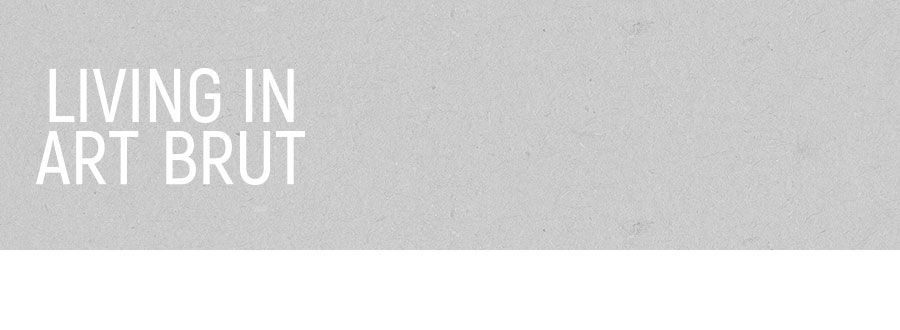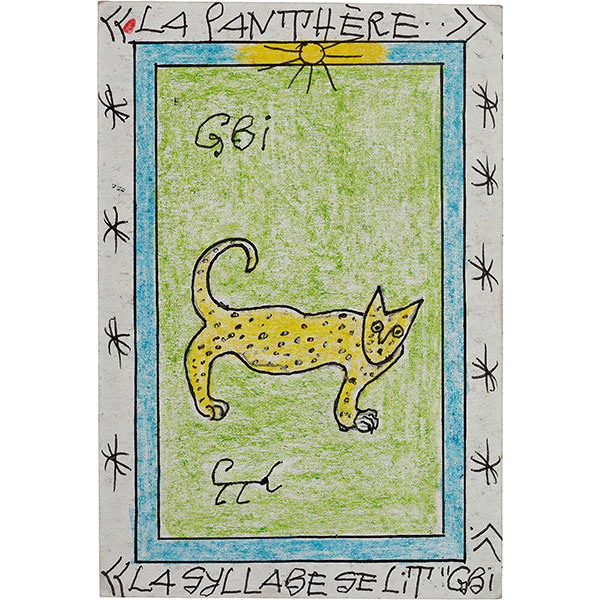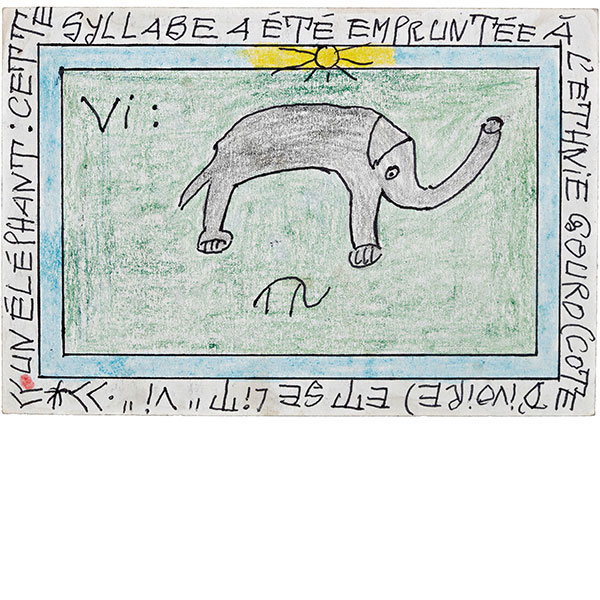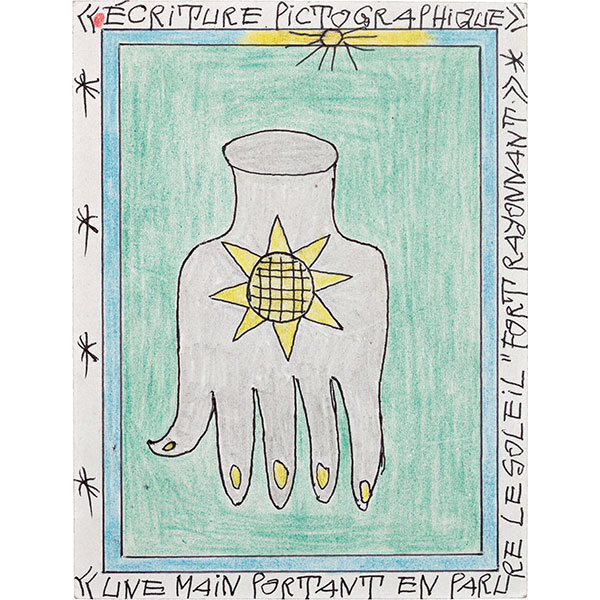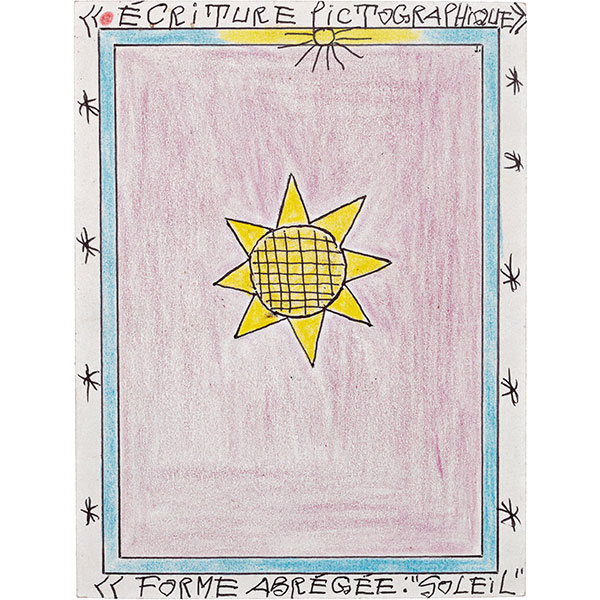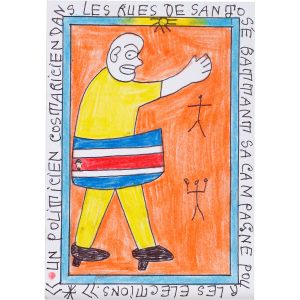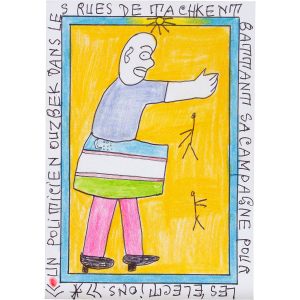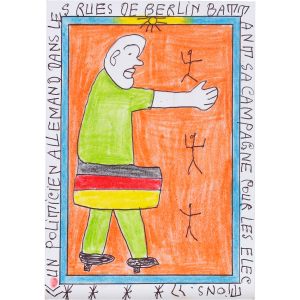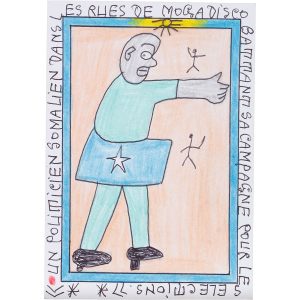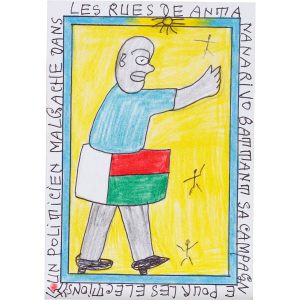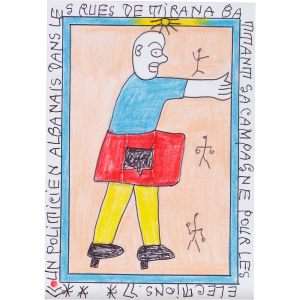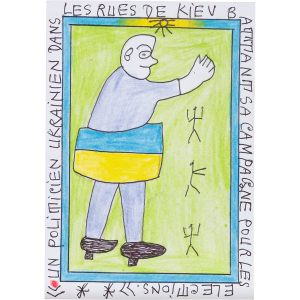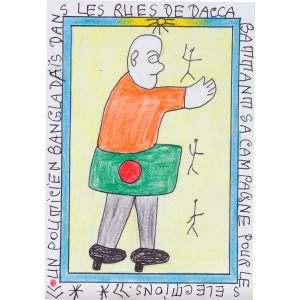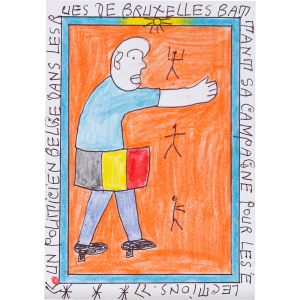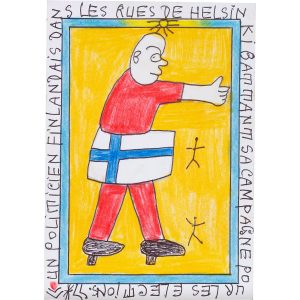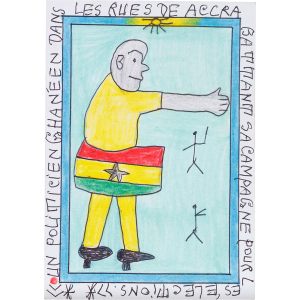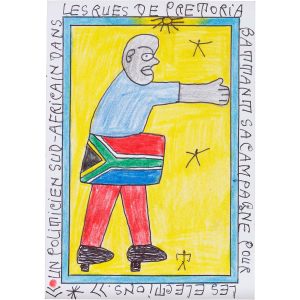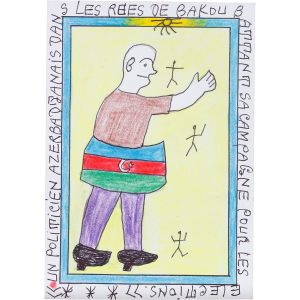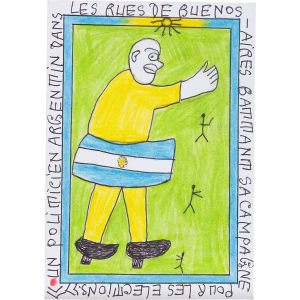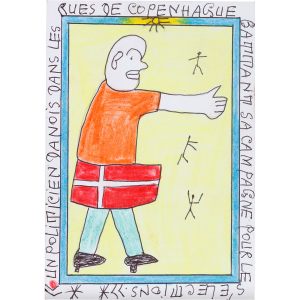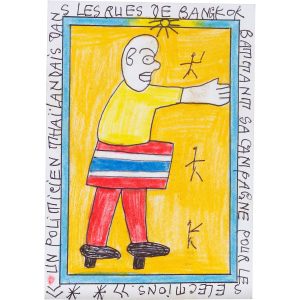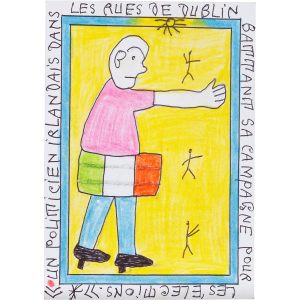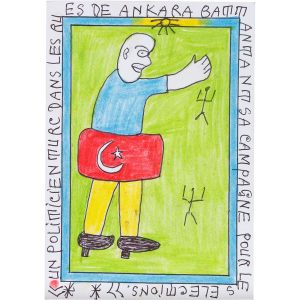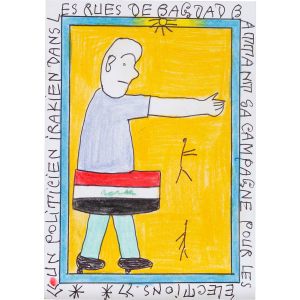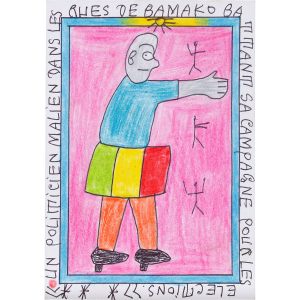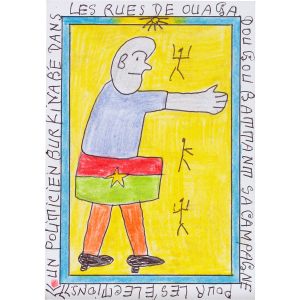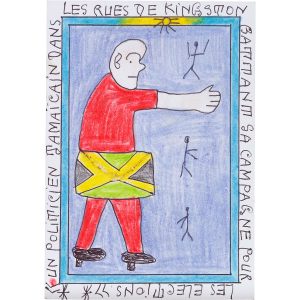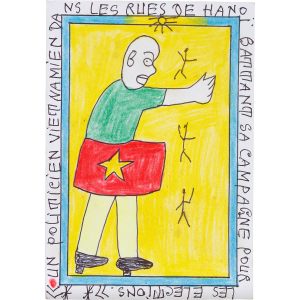1923 – 2014, Republic of Côte d'Ivoire
Frédéric Bruly Bouabré was born in 1923 in Zéprégühé – formerly part of French West Africa. His family belonged to the Bété people. Later, it became important for him to write down this culture and not just leave it to oral tradition. With this in mind, he created a graphic alphabet of his mother tongue with over 400 letters – the Bété alphabet.
Frédéric Bruly Bouabré attended a Catholic school. He then worked for the navy, the railway and as a clerk. At first, he was a civil servant for the French colonial power and then later for the Republic of Côte d’Ivoire. The Republic of Côte d’Ivoire has wanted to play an active role in the development and modernisation of Africa since its independence in 1960.
Frédéric Bruly Bouabré was a self-taught artist. The poet, writer and graphic artist lived in Abidjan – the country’s main urban centre located along the Atlantic Ocean. His themes dealt with language and identity. On 11 March 1948, Frédéric Bruly Bouabré had a religious vision. It was in this context that he was given the additional name “Cheik Nadro”. This name means “He who does not forget”. After this revelatory experience, he developed his work cycles. He wanted to depict the world in a connected work. For this, he recorded observations, interpreted them and designed his own perception of the world. He was convinced that God continuously describes the shape of the universe through all objects, phenomena and living beings. This was documented by Frédéric Bruly Bouabré in countless drawings by way of his encyclopaedic and analytical approach.
Frédéric Bruly Bouabré used ballpoint pens and coloured pencils as well as paper and cardboard in postcard size and small formats for his drawings. Each drawing is framed and has an accompanying description in French. For the artist, the captions, which reflected his thinking, were as important as the respective image. On the back, he signed each drawing with the date of its creation. The connection between image and text is central to his drawings.
In 2013, at the 55th Venice Biennale – an event that went down in history as the Biennale of the Outsiders – Massimiliano Gioni showcased a series of over 100 works on the theme of peace in the Arsenale of his “Il Palazzo Enciclopedico”. In addition, 164 drawings by Frédéric Bruly Bouabré from various series were featured in the Republic of Côte d’Ivoire’s Pavilion at the Arsenale. In 2017, works by Frédéric Bruly Bouabré were displayed in the Louis Vuitton Foundation in Paris for the exhibition “Les Initiés” (The Insiders) from the collection of Jean Pigozzi. In 2022, the Museum of Modern Art in New York featured the exhibition “Frédéric Bruly Bouabré: World Unbound”.
His works can be found, for example, in the Treger/Saint Silvestre collection, Portugal and the private collection of Dieter F. Lange, Germany.
Selected works
"Un Politicien ...", 2007


